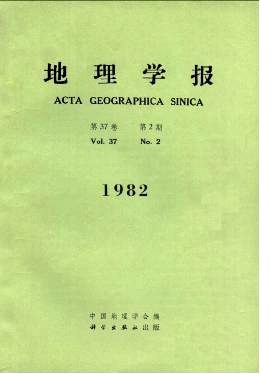Chunfen Lee
In recent geography there have been changes in content, approach and techniques, As to content the variety of subjeetmatter is increasing on the one hand and reducing on the other. Whatever the changes might be in this regard, traditions are the foundation of development. Improvements are made on what has already been achieved. The traditional themes of spatial arrangement of phenomena, Man-environment relationship and regional studies are much the same. As those today, an important change is the shift of aspect. Themes of spatial arrangement are being directed from mere description to locational analysis, i.e., how things are located in relation to other things; to formation and modification of distributional patterns. Those of Man-environment relationship is shiftng from emphasis on the influence of environment on man to that on the impact of man on environment. Those of regional studies are transferring from the study of individual homogeneous regions to that of functional regions, interregional relationship and spatial organization of regions.One of the great improvements is the increasing emphasis on the importance of the way the geographer approaches his subjectmatter. In this respect, three different approaches are distinguished, namely, spatial analysis, ecological analysis and regional complex analysis. They are closely related. The way of structuring geography in terms of these three approaches merits recommendation, for they approach problems on the related variables as well as their links. It is to be noted that such approaches stress the unity of geography rather than diversity, thus breaking through the long-standing two-fold dualism of geography, i.e., the separation of systematic from regional geography and that of physical from economic geography, although specialization in one branch of geography may be necessary for a geographer to make progress. It is especially the artificial split between physical and economic geography that has in a large degree hindered the progress of geography as a whole. Moreover, such approaches as these are favorable for inter-disciplinary communication, which would promote the development of geography on practical as well as on academic sides.With regard to techniques some geographers hold that the most obvious recent changes have been in method and techniques which enable geographers to do researchmore accurately and more quickly. Nevertheless, the quantitative techniques are new only in the sense that they have been used extensively only in recent years. Also, there is a sympton of trend that some being used are completely unsuited to the purpose of geography, while the older but still useful techniques are discarded.To sum up, recent developments of geography have been made on the basis of traditional accomplishments, as a result of social needs, progress of related sciences and demand of development of the discipline itself. Themes of recent geography are little different from the traditional ones but have been injected new ideas and lights, shifted emphasis of aspects and innovated methods and techniques. It is also commendable that encouraging improvements are witnessed in the combination of theory with practice.
